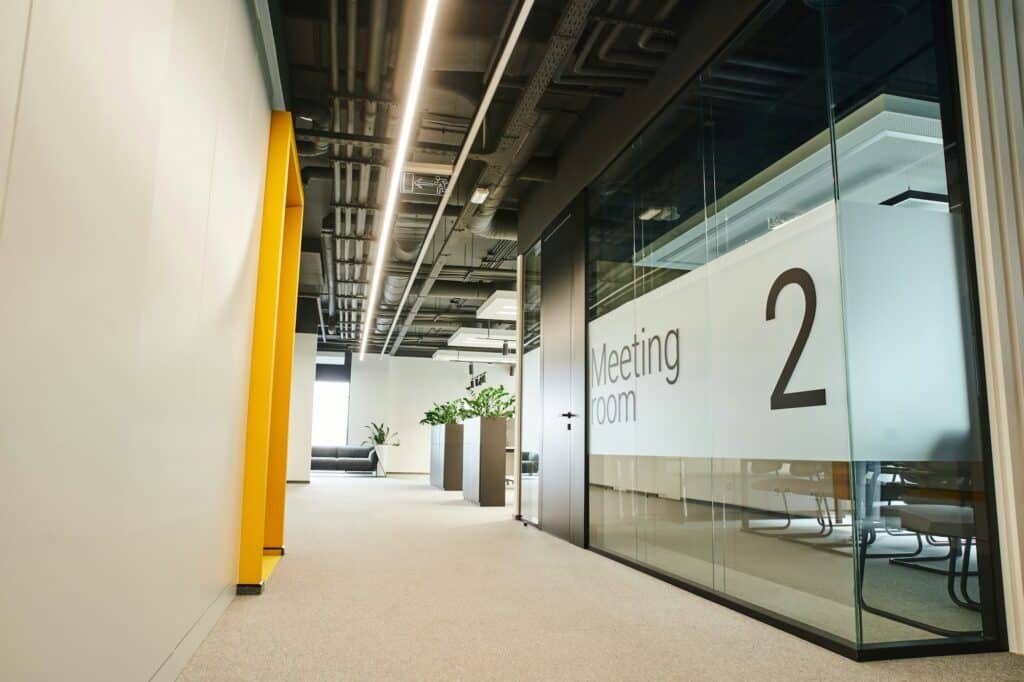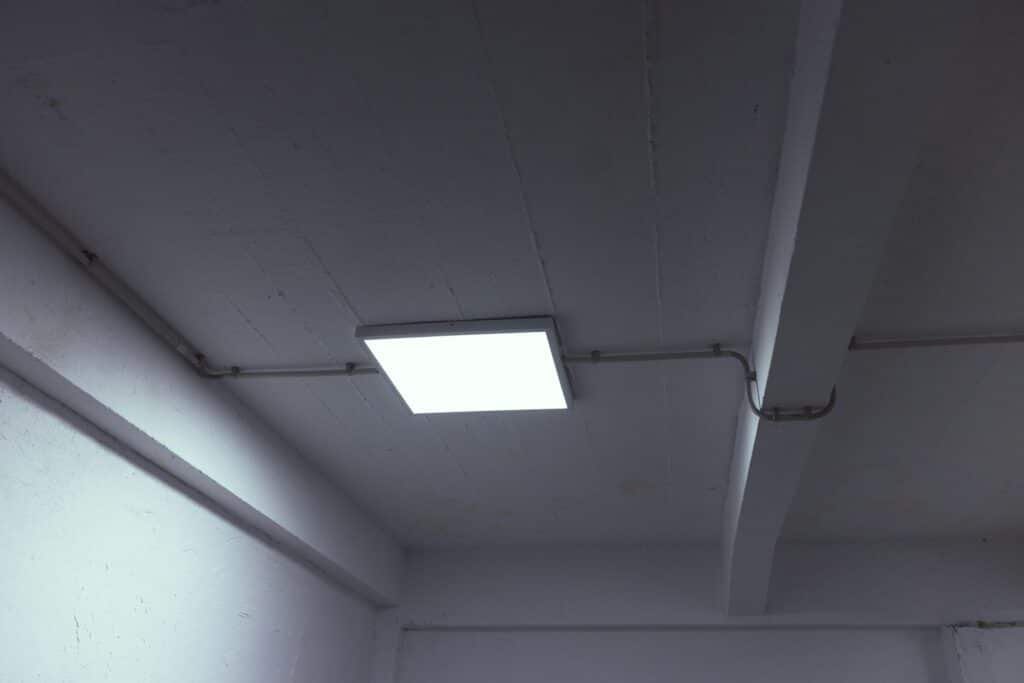Lighting in Energy-Efficient Buildings: 7 Key Insights – Energy efficiency is more than just a buzzword; it’s a necessity. As homeowners and business owners in Blackpool and nearby areas like Lytham St Annes, Poulton-le-Fylde, and Preston, you know the importance of reliable, safe, and professional electrical services. But did you know that lighting plays a big role in making your buildings more energy-efficient? This article explores how lighting upgrades, especially LED systems, can improve energy efficiency, reduce carbon emissions, and ensure you meet regulations.
Introduction to Energy Efficiency in Buildings
Importance of Energy Efficiency
Energy efficiency is crucial for several reasons. First, it helps cut operational costs. By using less energy, you save money on utility bills, which can add up over time. Second, energy efficiency is vital for protecting the environment. Using less energy lowers carbon emissions, which helps keep our planet healthy. Lastly, energy-efficient buildings are more attractive to tenants and buyers, boosting property value and marketability.
Overview of the IPF Report
The Investment Property Forum (IPF) has released an 81-page report highlighting the importance of lighting upgrades in boosting energy efficiency in commercial buildings. The report looks at various improvement measures and their impact on Energy Performance Certificate (EPC) ratings, energy use, carbon emissions, and costs. It also considers changes in EPC modelling methods introduced in June 2022, which may lower EPC ratings for some buildings.

Understanding Energy Performance Certificates (EPCs)
What are EPCs?
Energy Performance Certificates (EPCs) provide information about the energy efficiency of buildings. They are essential for assessing a building’s energy performance and identifying areas for improvement. EPCs are required for all buildings that are constructed, sold, or rented, and they provide a rating from A (most efficient) to G (least efficient).
Changes in EPC Modelling Methods
In June 2022, changes were introduced to EPC modelling methods, which may lower EPC ratings for some buildings. These changes highlight the need for continuous upgrades to maintain or improve EPC ratings. The new modelling methods consider factors such as building fabric, heating systems, and lighting, making it essential for building owners to stay updated with the latest regulations.
Impact of EPC Ratings on Buildings
EPC ratings significantly impact a building’s marketability, regulatory compliance, and operational costs. Higher EPC ratings indicate better energy efficiency, which can attract tenants and buyers. Buildings with high EPC ratings are also more likely to comply with regulations, avoiding potential fines and penalties. Additionally, energy-efficient buildings have lower operational costs, making them more economically viable in the long run.
Lighting Upgrades for Energy Efficiency
Benefits of LED Lighting
Energy Savings with LED Lighting
Modern LED lighting systems can lead to energy savings of 60% to 80%. These systems are more efficient than traditional lighting solutions, reducing energy use and costs. LEDs convert most of the energy they consume into light, with very little wasted as heat. This efficiency translates into significant energy savings, especially in large commercial buildings where lighting accounts for a big part of energy use.
Longevity of LED Luminaires
LED luminaires have a much longer lifespan compared to traditional bulbs, lasting over 50,000 hours. This reduces the frequency and cost of replacements, contributing to long-term savings. The extended lifespan of LEDs also means less maintenance and fewer disruptions, making them a cost-effective and convenient lighting solution.
Intelligent Control Systems
How Intelligent Controls Work
Intelligent control systems optimise lighting usage by adjusting brightness and colour temperature based on occupancy and natural light levels. This enhances energy efficiency and user comfort. For example, sensors can detect when a room is empty and automatically dim or turn off the lights, saving energy. Similarly, daylight harvesting systems adjust artificial lighting based on the amount of natural light available, ensuring optimal lighting levels while minimising energy use.
Integration with Building Management Systems
Intelligent lighting controls can be integrated with building management systems to provide centralised control and monitoring. This integration allows for better energy management and operational efficiency. Building managers can monitor and control lighting across multiple areas from a single interface, making it easier to implement energy-saving strategies and track performance.

Carbon Reduction through Lighting Upgrades
Embodied vs. Operational Carbon
Embodied carbon refers to the carbon emissions associated with the production and installation of building materials, while operational carbon is related to the energy used during the building’s operation. Both need to be minimised for sustainable building practices. Lighting upgrades, particularly the switch to LED systems, can significantly reduce operational carbon by lowering energy use. Additionally, choosing LED products with lower embodied carbon can further enhance a building’s sustainability.
Role of LED Lighting in Carbon Reduction
Upgrading to LED lighting solutions is crucial for reducing both embodied and operational carbon. LEDs are more energy-efficient and have a lower carbon footprint compared to traditional lighting options. By using less energy, LEDs reduce the demand for electricity, which in turn lowers carbon emissions from power plants. This makes LED lighting a key part of any carbon reduction strategy.
Case Studies of Successful Carbon Reduction
Several case studies show the effectiveness of LED lighting upgrades in reducing carbon emissions. For example, a commercial office building in Blackpool implemented a comprehensive lighting upgrade, replacing outdated fluorescent fixtures with modern LED systems. The result was a 70% reduction in energy use and a significant decrease in carbon emissions. Another case study from a manufacturing facility in Manchester showed similar results, with energy savings of 65% and a big reduction in operational carbon.
Economic Benefits of Lighting Upgrades
Cost Savings from Energy Efficiency
Energy-efficient lighting solutions can lead to substantial cost savings by reducing energy use and maintenance expenses. These savings can offset the initial investment in lighting upgrades. For example, a retail store that upgrades to LED lighting can save thousands of pounds annually on energy bills. Over time, these savings add up, making the investment in energy-efficient lighting highly cost-effective.
Return on Investment (ROI) for LED Upgrades
The ROI for LED lighting upgrades is typically high due to the significant energy savings and reduced maintenance costs. Businesses can recover their investment within a few years. For instance, a hotel that invests in LED lighting may see a payback period of just two to three years, after which the ongoing savings contribute directly to the bottom line. This makes LED upgrades an attractive option for businesses looking to improve their financial performance.
Mitigating Rising Operational Costs
Implementing energy efficiency measures, including LED lighting upgrades, is essential for mitigating rising operational costs. This proactive approach ensures long-term economic viability. As energy prices continue to rise, businesses that have invested in energy-efficient lighting will be better positioned to manage their operational costs. This can provide a competitive advantage and contribute to long-term success.
Regulatory Compliance and Marketability
Importance of Staying Updated with Regulations
Building owners must stay updated with regulatory requirements to ensure compliance and avoid penalties. Upgrading lighting systems is a key strategy for meeting these regulations. For example, the UK government has set ambitious targets for reducing carbon emissions, and buildings that fail to comply with energy efficiency standards may face fines or other penalties. By staying informed and proactive, building owners can ensure compliance and avoid potential issues.
Impact of Lighting on EPC Ratings
Lighting upgrades can significantly impact EPC ratings by improving energy efficiency. Higher EPC ratings enhance a building’s marketability and compliance with regulations. For example, a commercial office building that upgrades to LED lighting may see its EPC rating improve from a C to a B, making it more attractive to potential tenants and buyers. This can increase the building’s value and marketability.
Enhancing Property Marketability
Energy-efficient buildings with high EPC ratings are more attractive to tenants and buyers. Upgrading lighting systems can enhance a property’s marketability and value. For example, a residential property with energy-efficient lighting and a high EPC rating may command a higher sale price and attract more interest from buyers. Similarly, commercial properties with energy-efficient lighting are more likely to attract high-quality tenants, leading to higher occupancy rates and rental income.
Practical Steps for Implementing Lighting Upgrades
Assessing Current Lighting Systems
The first step in implementing lighting upgrades is to assess the current lighting systems. This assessment helps identify areas for improvement and potential energy savings. Building owners can conduct a lighting audit to evaluate the performance of existing fixtures, identify inefficiencies, and determine the best upgrade options. This process provides a clear understanding of the current lighting situation and helps inform the upgrade strategy.
Planning and Budgeting for Upgrades
Proper planning and budgeting are essential for successful lighting upgrades. This includes selecting the right LED solutions and estimating the costs and benefits. Building owners should consider factors such as the initial investment, potential energy savings, maintenance costs, and ROI. By developing a detailed plan and budget, building owners can ensure a smooth and cost-effective upgrade process.
Choosing the Right LED Solutions
Selecting the appropriate LED lighting solutions is crucial for maximising energy efficiency and achieving desired lighting outcomes. Consider factors such as brightness, colour temperature, and control options. For example, in a commercial office setting, it may be beneficial to choose LED fixtures with adjustable brightness and colour temperature to create a comfortable and productive work environment. In a retail setting, LED lighting with high colour rendering can enhance product displays and attract customers.
Installation and Maintenance Tips
Proper installation and maintenance are key to ensuring the longevity and performance of LED lighting systems. Follow best practices for installation and schedule regular maintenance checks. For example, ensure that LED fixtures are installed according to manufacturer guidelines and that any control systems are properly configured. Regular maintenance, such as cleaning fixtures and checking for any issues, can help maintain optimal performance and extend the lifespan of the lighting system.
Conclusion
Recap of Key Points
Lighting upgrades play a critical role in enhancing energy efficiency, reducing carbon emissions, and ensuring regulatory compliance. Modern LED lighting systems offer significant benefits in terms of energy savings, cost reduction, and environmental impact. By investing in energy-efficient lighting, building owners can improve their property’s performance, reduce operational costs, and contribute to a more sustainable future.
Future Trends in Energy-Efficient Lighting
The future of energy-efficient lighting includes advancements in LED technology, intelligent control systems, and integration with smart building solutions. These trends will continue to drive improvements in building efficiency and sustainability. For example, the development of tunable white LEDs allows for dynamic adjustment of colour temperature, enhancing both energy efficiency and user comfort. Additionally, advancements in wireless control systems and IoT integration will enable more sophisticated and efficient lighting management.
FAQs
How do LED lights save energy?
LED lights save energy by converting most of the energy they consume into light, with very little wasted as heat. This makes them much more efficient than traditional lighting options.
What is an Energy Performance Certificate (EPC)?
An Energy Performance Certificate (EPC) provides information about the energy efficiency of a building. It includes a rating from A (most efficient) to G (least efficient) and recommendations for improving energy efficiency.
How can lighting upgrades improve EPC ratings?
Lighting upgrades, particularly the switch to LED systems, can significantly improve EPC ratings by reducing energy consumption and enhancing overall energy efficiency.
What are the benefits of intelligent lighting control systems?
Intelligent lighting control systems optimise lighting usage by adjusting brightness and colour temperature based on occupancy and natural light levels. This enhances energy efficiency and user comfort.
How do lighting upgrades contribute to carbon reduction?
Lighting upgrades, especially the switch to LED systems, reduce energy consumption and lower carbon emissions from power plants. This contributes to both embodied and operational carbon reduction.
What is the ROI for LED lighting upgrades?
The ROI for LED lighting upgrades is typically high due to significant energy savings and reduced maintenance costs. Businesses can often recover their investment within a few years.
Sources

Nathan is a founder and director of Westwood Electrical Contracting Ltd. and is a fully qualified electrician, audited under the NAPIT (National Association of Professional Inspectors and Testers) scheme.

